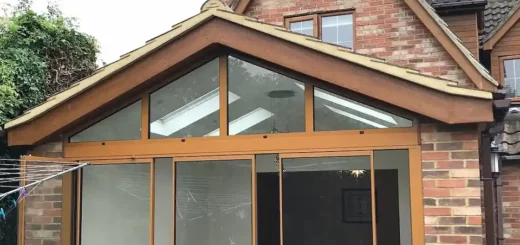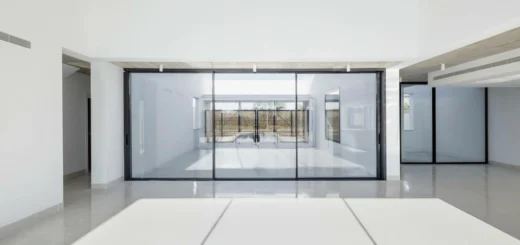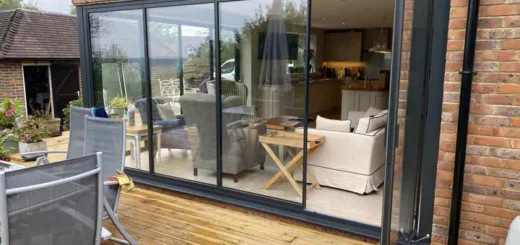Bifold Conservatory Doors: Choosing the Right System for You
Table of Contents
What Are Bifold Conservatory Doors?
Bifold conservatory doors offer a unique way to open up your garden room or conservatory. Unlike standard patio doors, these folding panels stack neatly to one side, creating a wide opening.
Internal vs External Conservatory Bifold Doors
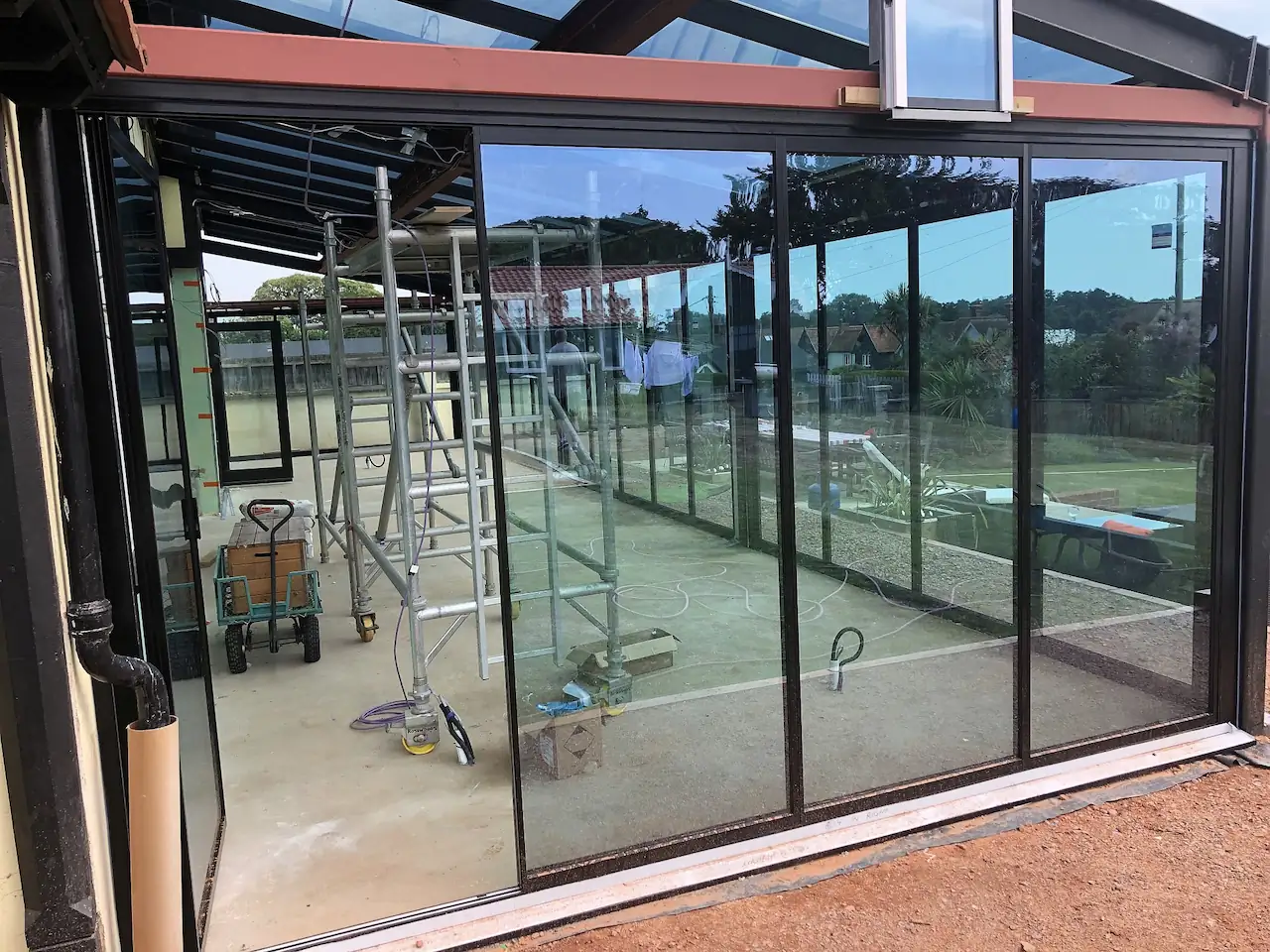
When it comes to bifold conservatory doors, you’ve got two main options: internal and external. Internal folding doors separate your conservatory from the rest of your home, letting you control the temperature and atmosphere in each space. They’re perfect for those chilly evenings when you want to enjoy the view without feeling the cold.
External conservatory folding doors, on the other hand, connect your garden room directly to the outdoors. They’re brilliant for summer barbecues and garden parties, allowing guests to move freely between inside and out. External bifold doors need to be more robust, capable of withstanding British weather while keeping your conservatory snug and dry.
How Bifold Doors Work in Conservatories
The magic of bi fold conservatory doors lies in their clever design. Each panel is connected by hinges, allowing the doors to fold like a concertina. When you want to open up your space, simply push the first panel, and the rest will follow smoothly along a track.
This folding mechanism is particularly useful in conservatories, where space is often at a premium. Unlike swing doors that need room to open inwards or outwards, conservatory folding doors tuck neatly away. This means you can place furniture right up to the doorway without worrying about clearance.
Smooth Operation in Compact Areas
Top-hung systems are popular in conservatories as they don’t require a deep bottom track. This reduces the risk of tripping and makes it easier to keep the track clean. For larger conservatory bifold doors, a bottom-rolling system might be more suitable, providing extra support for the weight of the panels.
Styles and Colours of Bifold Conservatory Doors
Bifold conservatory doors come in a range of designs to complement your home. From sleek, modern looks to more traditional styles, there’s an option to match every taste. The right choice can make your conservatory feel like a natural extension of your living space.
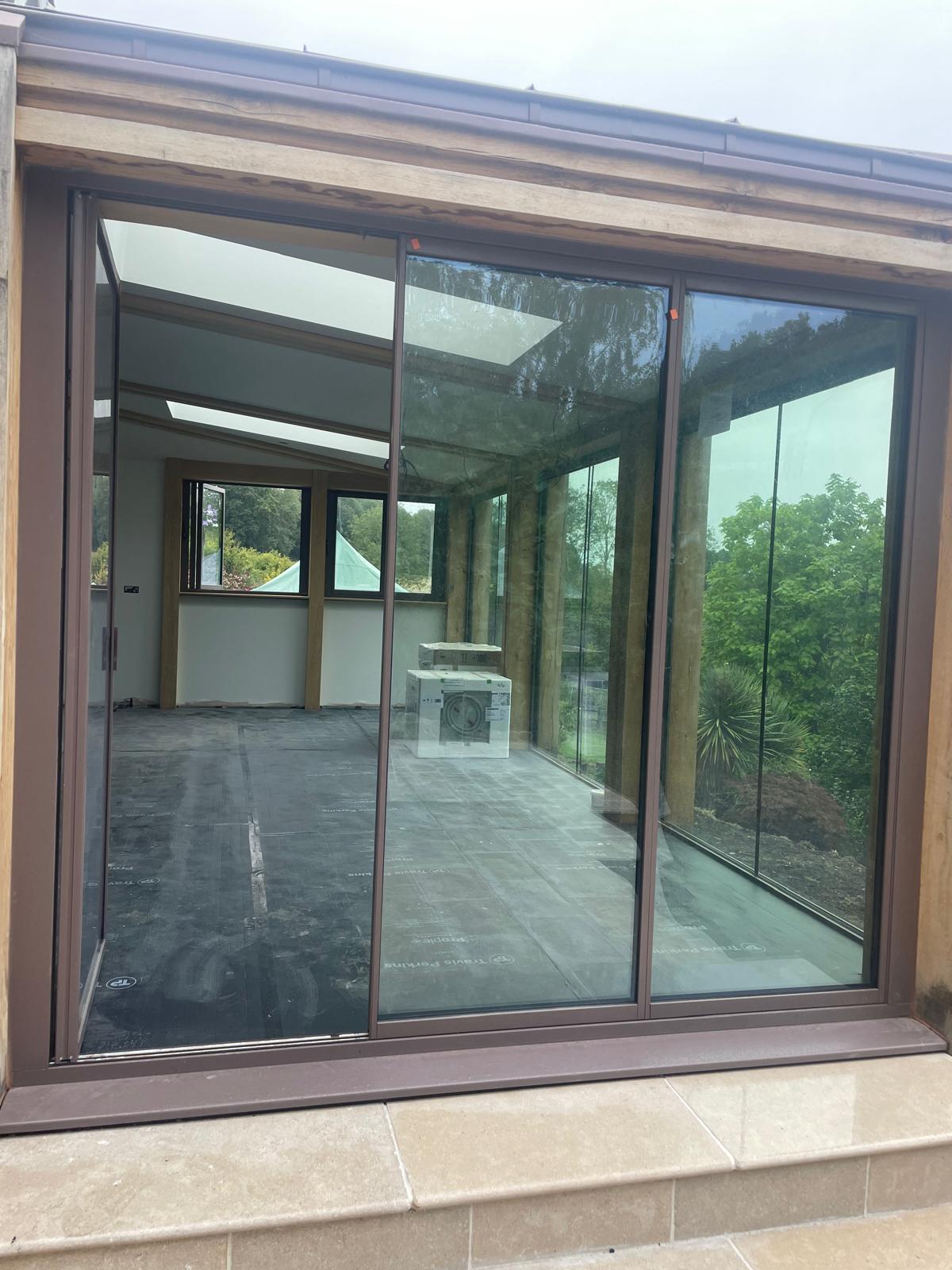
Colour Choices for Conservatory Bifold Doors
Gone are the days when white was the only option for conservatory folding doors. Today’s market offers a rainbow of colours to choose from. Fancy a bold statement? Try deep blue or forest green. For a subtler look, soft greys and creams work wonders.
Dual colour options add another layer of flexibility to bifold conservatory doors. You might opt for a darker shade on the outside to match your window frames, with a lighter tone inside to keep your conservatory bright. This two-tone approach lets you tailor the appearance to both your garden and interior design.
Glass Types for Conservatory Bifold Doors
The glass in your conservatory bifold doors plays a major role in comfort and energy efficiency. Double glazing is standard, but triple glazing offers extra insulation for year-round use. Low-E glass helps keep heat in during winter and reflects it away in summer, making your conservatory more pleasant regardless of the season.
For privacy, consider tinted or frosted glass. These options let light in while keeping prying eyes out. If your conservatory faces a busy road, acoustic glass can help muffle outside noise, creating a peaceful retreat.
Integral Blinds for Bifold Conservatory Doors
Integral blinds offer a smart solution for conservatory folding doors. These blinds sit between the panes of glass, protected from dust and damage. They’re controlled by a discrete magnetic slider, eliminating the need for cords or chains.
With integral blinds, you can easily adjust the light and privacy in your conservatory. They’re particularly useful on sunny days when glare might otherwise make the space uncomfortable. Plus, they give a clean, uncluttered look to your bi fold conservatory doors, perfect for modern design schemes.
Energy Efficiency and Comfort With Bifold Conservatory Doors
The thermal performance of bifold conservatory doors can make or break your garden room’s comfort. Well-designed folding conservatory doors help maintain a pleasant temperature year-round, letting you enjoy your conservatory regardless of the weather outside.
Insulation Properties of Bifold Doors
U-values are key when assessing the insulation of conservatory folding doors. This measure indicates how well the doors prevent heat transfer. The lower the U-value, the better the insulation. Many modern patio doors, including bi-folding doors, often boast impressive U-values, helping to keep your conservatory cosy in winter and cool in summer.
Aluminium bifolding doors are particularly good at balancing strength and thermal efficiency. Despite metal’s reputation for conducting heat, advanced manufacturing techniques create a thermal break within the frame. This clever design improves the doors’ insulating properties, rivalling the performance of uPVC options.
Ventilation Benefits in Summer
Bifold conservatory doors shine when it comes to summer ventilation. Unlike traditional sliding doors, bi-fold doors can be partially or fully opened, allowing you to fine-tune airflow. On sweltering days, throw open your external bifold doors to create a refreshing breeze through your conservatory.
Some bi-fold doors feature trickle vents, small openings that allow a gentle flow of fresh air even when the doors are closed. This can help prevent condensation and maintain good air quality in your conservatory without compromising security or letting in unwanted pests.
Weather Resistance
While energy efficiency often focuses on keeping heat in, it’s equally important that your bifold conservatory doors keep the elements out. Look for doors with robust weatherstripping and drainage systems. These features prevent drafts and water ingress, ensuring your conservatory stays dry and comfortable even during heavy rain.
For coastal homes or those in exposed locations, consider bifold conservatory doors with additional weather resistance features. Some manufacturers offer special coatings or hardware designed to withstand salt spray and strong winds, helping to extend the life of your doors in challenging environments.
Choosing the Right Design of Bifold Conservatory Doors
Selecting the perfect bifold conservatory doors involves more than just picking a colour. The design you choose will affect how you use your space and how it looks from both inside and out.
Matching Door Style to Conservatory Type
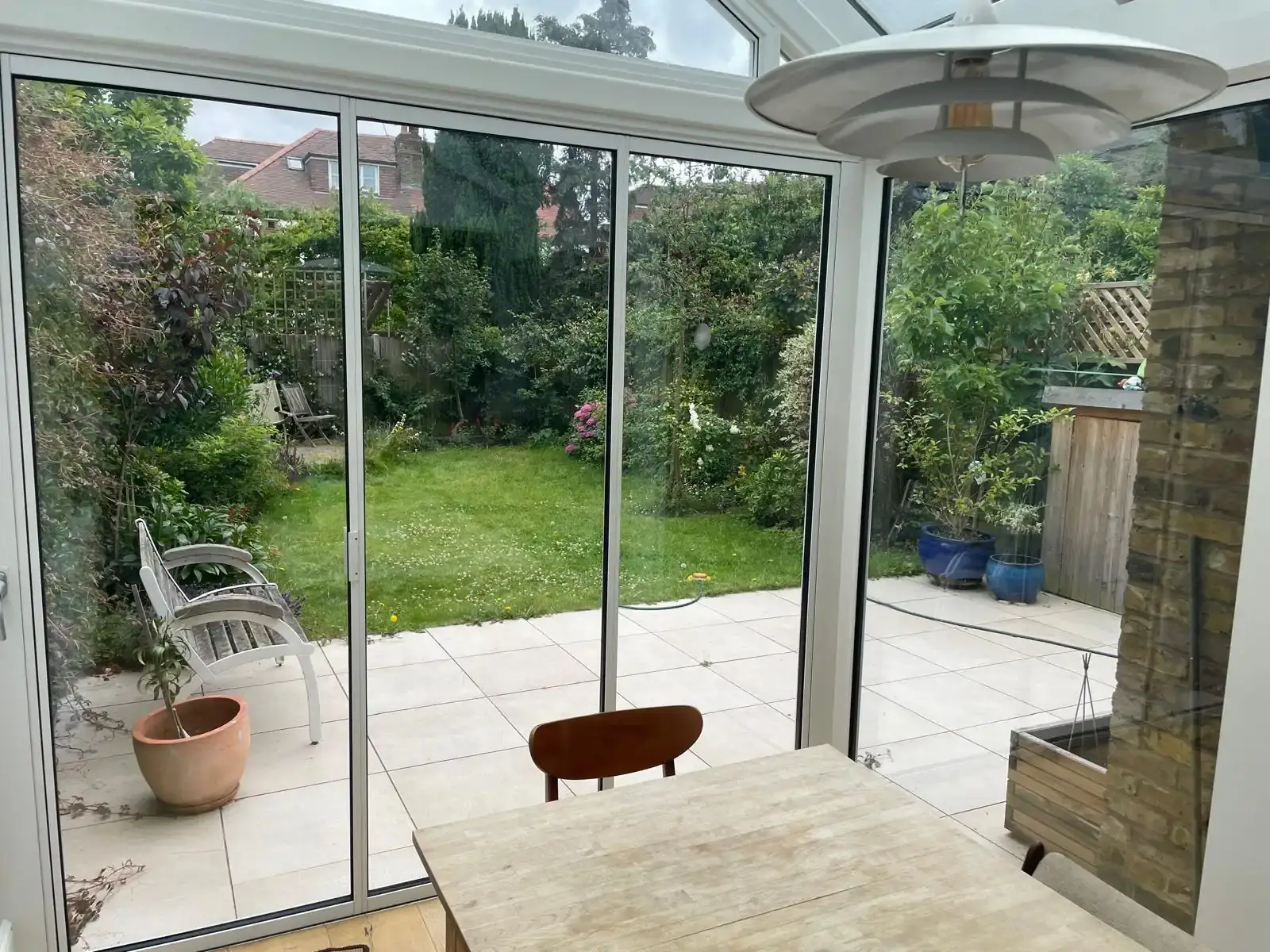
Your conservatory’s architecture should guide your choice of folding conservatory doors. For a traditional orangery-style conservatory, white bifold doors with Georgian bars might be the ticket. They’ll complement the classic look while providing modern functionality.
On the flip side, if you’ve got a sleek, contemporary conservatory, consider anthracite grey bifold doors. Their dark, sophisticated tone works well with modern design elements. Slim sightlines in these doors result in a huge glass area, creating an almost uninterrupted view of your garden.
Door Configuration
Think about how you’ll use your space when choosing the configuration of your bi-folding doors. Do you want the doors to open from the centre or from one side? How many panels will work best? Conservatory folding doors typically come in configurations from two to seven panels.
For larger openings, you might opt for more panels in your bifold conservatory doors. This allows for greater flexibility – you can open just a few panels for ventilation or fold them all back for full access to your garden.
Hardware and Finish Options
The devil’s in the details when it comes to external bifold doors. Hardware choices can make a big difference to both the look and usability of your doors. Lever handles are popular for their ease of use, while dropbolts add extra security. Choose finishes that complement your door colour – brushed chrome looks great with grey doors, while brass might suit white doors better.
Don’t forget about the threshold. A low threshold can create a smaller step between the two sides, which is particularly useful if you have young children or mobility concerns. However, a slightly raised threshold might offer better weather protection in exposed locations.
Glass Panels and Glazing Options
The glass panels in your bi-fold doors play a huge role in their overall performance and appearance. Double glazing is standard, but triple glazing offers superior insulation if you’re planning to use your conservatory year-round.
For a truly unique look, consider bespoke bifold doors with decorative glazing. Etched or patterned glass can add privacy without sacrificing light, while coloured glass inserts can create a stunning feature. Just remember that any decorative elements should complement, not compete with, your conservatory’s overall design.
Weighing Up Your Options
When it comes to conservatory doors, bifolds aren’t the only game in town. While bifold conservatory doors offer numerous benefits, it’s worth considering how they stack up against other options.
Pros of Bifold Doors in Conservatories
Bifold conservatory doors excel at creating wide openings, allowing you to merge your indoor and outdoor areas effortlessly. On warm days, you can fold back the panels completely, turning your conservatory into an open-air pavilion. This flexibility is a major draw for many homeowners, as it allows for easy entertaining and a stronger connection with the garden.
Another advantage of conservatory folding doors is their space-saving design. Unlike traditional swing doors, bi-folding doors don’t require a large arc of clearance to open. This means you can place furniture closer to the doors without worrying about obstructions. Bifold conservatory doors also offer excellent ventilation options. You can open just one or two panels for a gentle breeze, or fold them all back for maximum airflow.
Potential Drawbacks
While bifold conservatory doors have many upsides, they’re not without their challenges. The track system that allows the smooth operation of bifold patio doors can be a tripping hazard if not properly installed. Regular cleaning and maintenance of this track are necessary to ensure smooth operation over time.
Another point to consider is the frame-to-glass ratio. Bifold conservatory doors typically have more visible frame than sliding doors due to the multiple panels. This can slightly reduce the amount of unobstructed glass area, potentially impacting your view. However, modern designs with slim profiles have largely mitigated this issue.
Slide and Fold Doors – A Clever Alternative
For those who like the idea of bifold conservatory doors but want to explore other options, slide and fold doors (also known as slide and pivot doors) offer an interesting alternative. These doors combine the best features of sliding and folding systems. They slide along a track like traditional patio doors, but can also be folded back for a wide opening.
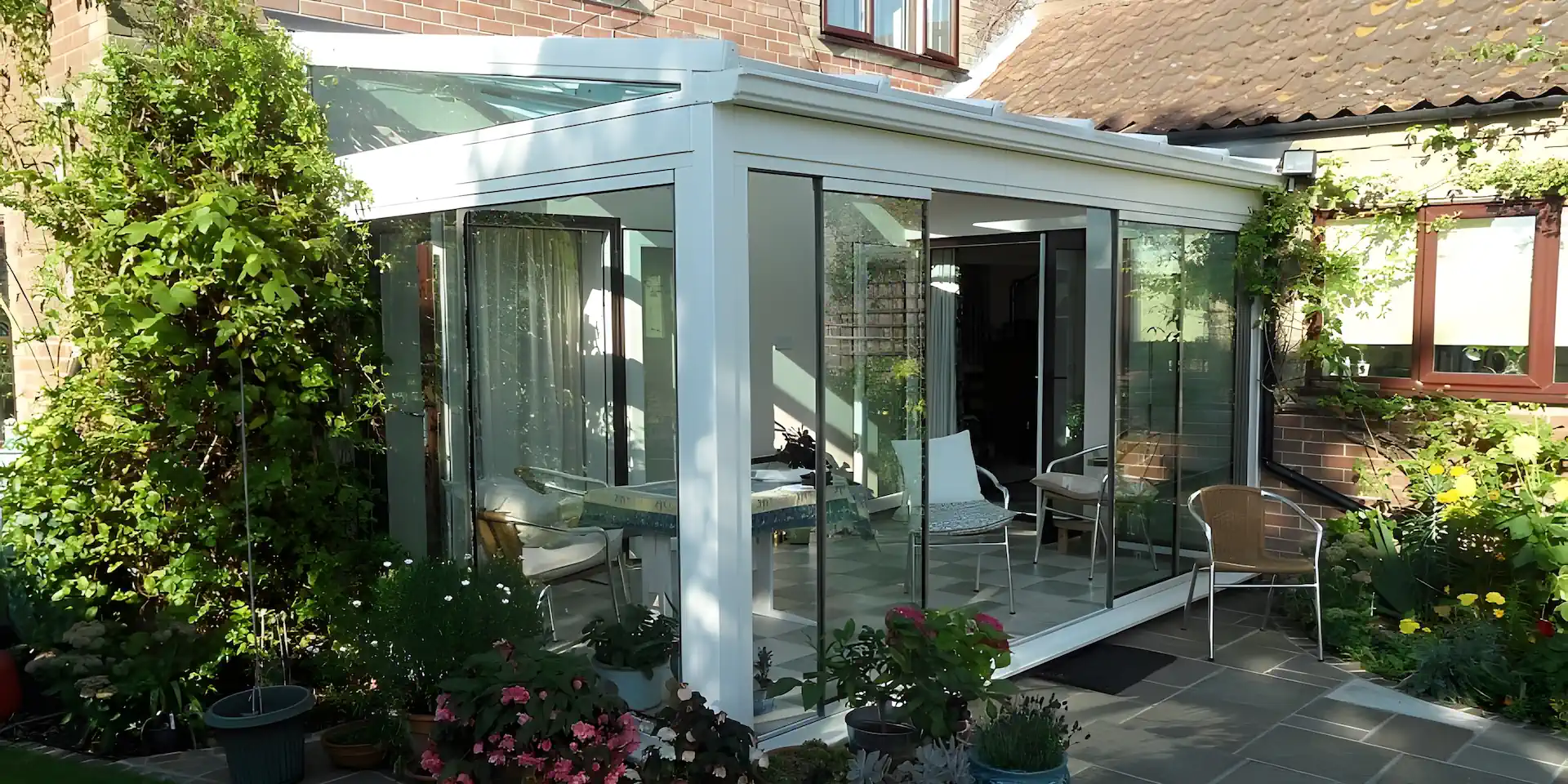
Slide and fold doors address some of the potential drawbacks of standard bi-folding doors. They typically have a lower threshold, reducing the tripping risk. When closed or partially open, they look like sleek sliding doors, offering a more unobstructed view than traditional folding conservatory doors.
Comparing Bifold and Sliding Door Systems
While bifold conservatory doors offer maximum opening width, sliding doors have their own advantages. They typically provide a larger expanse of uninterrupted glass when closed, which can be ideal if you want to frame a particular view. Sliding doors also tend to be easier to open partially for ventilation.
However, bifold patio doors generally offer better access when fully open. Where a sliding door can typically only open up to two-thirds of the aperture, folding conservatory doors can be completely folded back. This makes bifolds particularly useful for conservatories that serve as a bridge between home and garden.
Aluminium doors are popular for both bifold and sliding systems in conservatories. They offer strength and durability while allowing for slim sightlines. Whether you choose bifold conservatory doors or another option, aluminium frames can provide a sleek, modern look that complements a wide range of conservatory styles.
Bifold Conservatory Doors FAQ
What are bifold conservatory doors?
Bi folding doors, also known as concertina glass doors, are a type of door system that opens by folding back in sections. They consist of multiple panels that fold and stack neatly against the wall, creating a wide opening between your conservatory and garden. These doors offer flexibility in how much you open them, from a small section for ventilation to fully open.
How do conservatory bi folding doors work?
Conservatory bi folding doors operate on a track system, allowing the panels to glide smoothly when opened or closed. Each panel of the conservatory bi fold doors is connected with hinges, enabling them to fold like a concertina. When opened, the doors stack neatly to one side, increasing the available space and creating a wide, unobstructed opening.
What materials are used for bifold conservatory doors?
While uPVC and timber are popular choices, aluminium bifold doors are increasingly favoured for conservatories. Aluminium offers a combination of strength, durability, and slim sightlines, making it ideal for maximising glass area and views. It’s also low-maintenance and resistant to warping, which is particularly beneficial in the varying temperatures of a conservatory environment.
What’s the difference between internal and external conservatory bifold doors?
External folding doors are designed to connect your conservatory to the outdoors, requiring robust weatherproofing and security features. External bi-fold doors typically have more substantial frames and multi-point locking systems to withstand the elements and deter intruders. Internal bifold doors, used to separate the conservatory from other rooms, are generally lighter and may have less complex locking mechanisms.
Can I have different colours on the inside and outside of my conservatory bifold doors?
Yes, many manufacturers offer dual colour options for conservatory bifold doors. This allows you to choose different colours for the interior and exterior faces of your doors, helping them complement both your indoor decor and outdoor aesthetics. Keep in mind that dual colour options may be more readily available with aluminium frames than with uPVC.
How do bifold doors compare to sliding doors for conservatories?
Bifold doors offer a wider opening when fully retracted, allowing for a more open feel between your conservatory and garden. Sliding doors, however, typically provide larger uninterrupted glass areas when closed, which can be beneficial for the views. Bifolds are often preferred for their flexibility, while sliding doors are chosen for their simplicity and ease of use.
Can I install bifold doors in a lean-to conservatory?
Yes, bifold doors can be installed in a lean-to conservatory. The sloping roof of a lean-to doesn’t prevent the use of bifold doors, but it may influence the maximum height of the doors. When planning the installation, ensure there’s adequate headroom for the top track and that the doors won’t interfere with the roof pitch when open.
What’s the difference between standard and slim-line bifold door frames?
Slim-line bifold door frames feature narrower profiles compared to standard frames, maximising the glass area and minimising visible frame material. This results in more natural light and less obstructed views. Standard frames, while slightly bulkier, may offer additional strength and insulation properties. The choice often depends on personal preference and the specific requirements of your conservatory design.
How do I ensure my bi fold conservatory doors are compliant with Secured by Design standards?
To meet Secured by Design standards, ensure your bifold conservatory doors have been tested and certified to PAS 24 standards. Look for features such as multi-point locking systems, robust hinges, and toughened or laminated glass. Choose doors from a manufacturer approved by Secured by Design, and ensure they’re professionally installed according to the manufacturer’s guidelines.
About SunSeeker Doors
With over 20 years of experience, SunSeeker Doors remains at the forefront of door design with our quality-tested patio doors and related products, including the bespoke UltraSlim aluminium slide and pivot door system, Frameless Glass Doors, and Slimline Sliding Glass Doors. All of our doors are suitable for both internal and external use.
To request a free quotation, please use our online form. You may also contact 01582 492730, or email info@sunseekerdoors.co.uk if you have any questions.


